Today's Delightful Discovery: The Secret life of Silkworms
I've passed this unique web on my walk to class, and looked a little closer today only to find it wasn't a spider web at all....
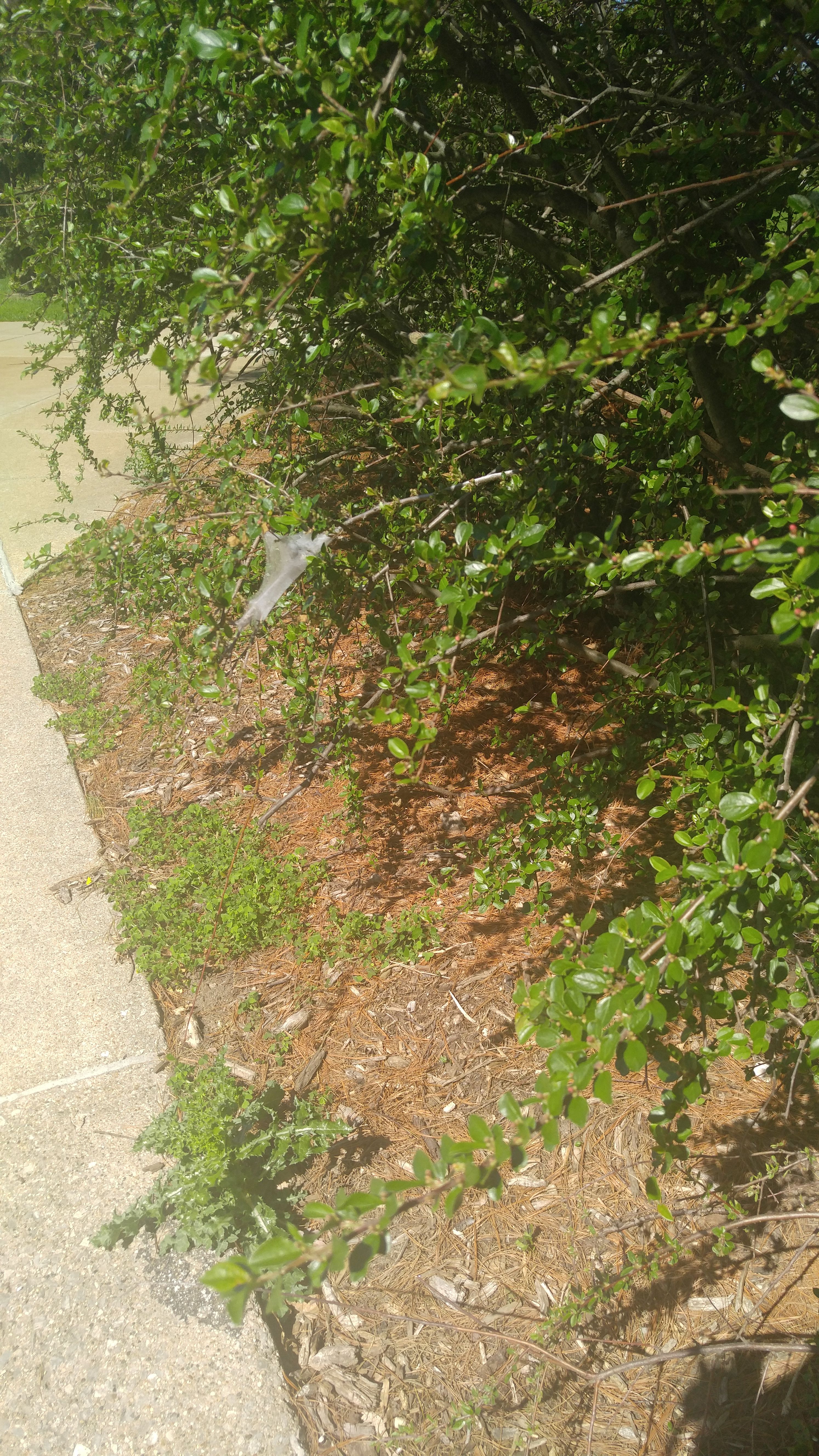
Silkworms!
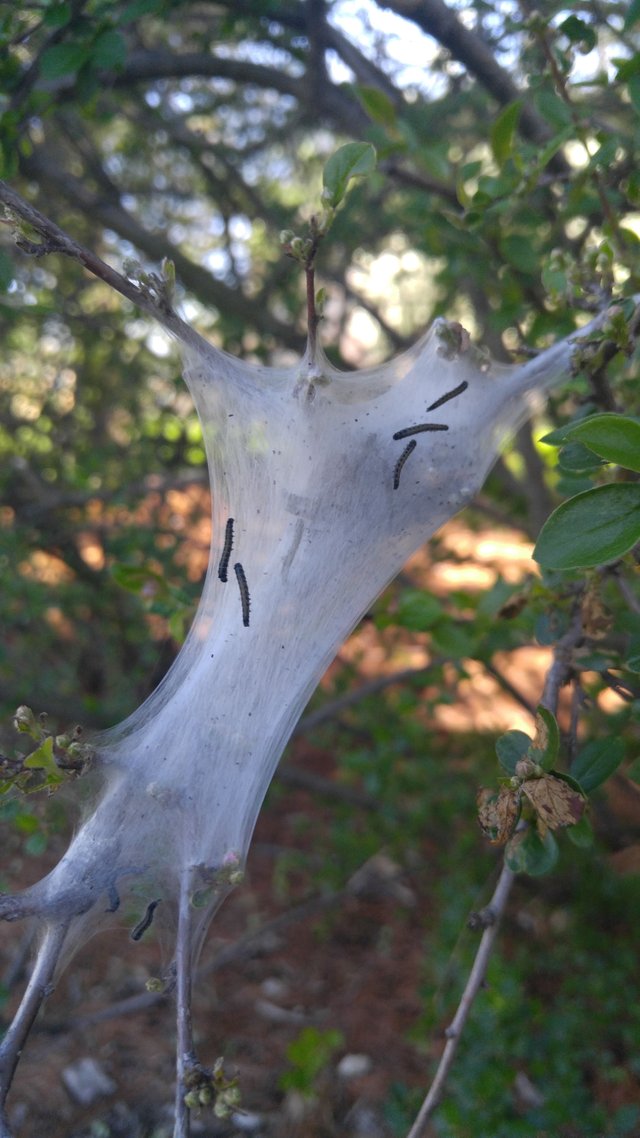
I honestly have never seen them before and decided to do some research. Here's what I found!
These would be wild silkworms from one of the 8-10 species in North America.
Some species live and feed from lilac bushes and cherry trees (Trouvelot), and I'm not too sure what type of bush this is so I think it will be hard to know the species! This species specifically, and many of the species in the US, aren't used for making commercial silk.
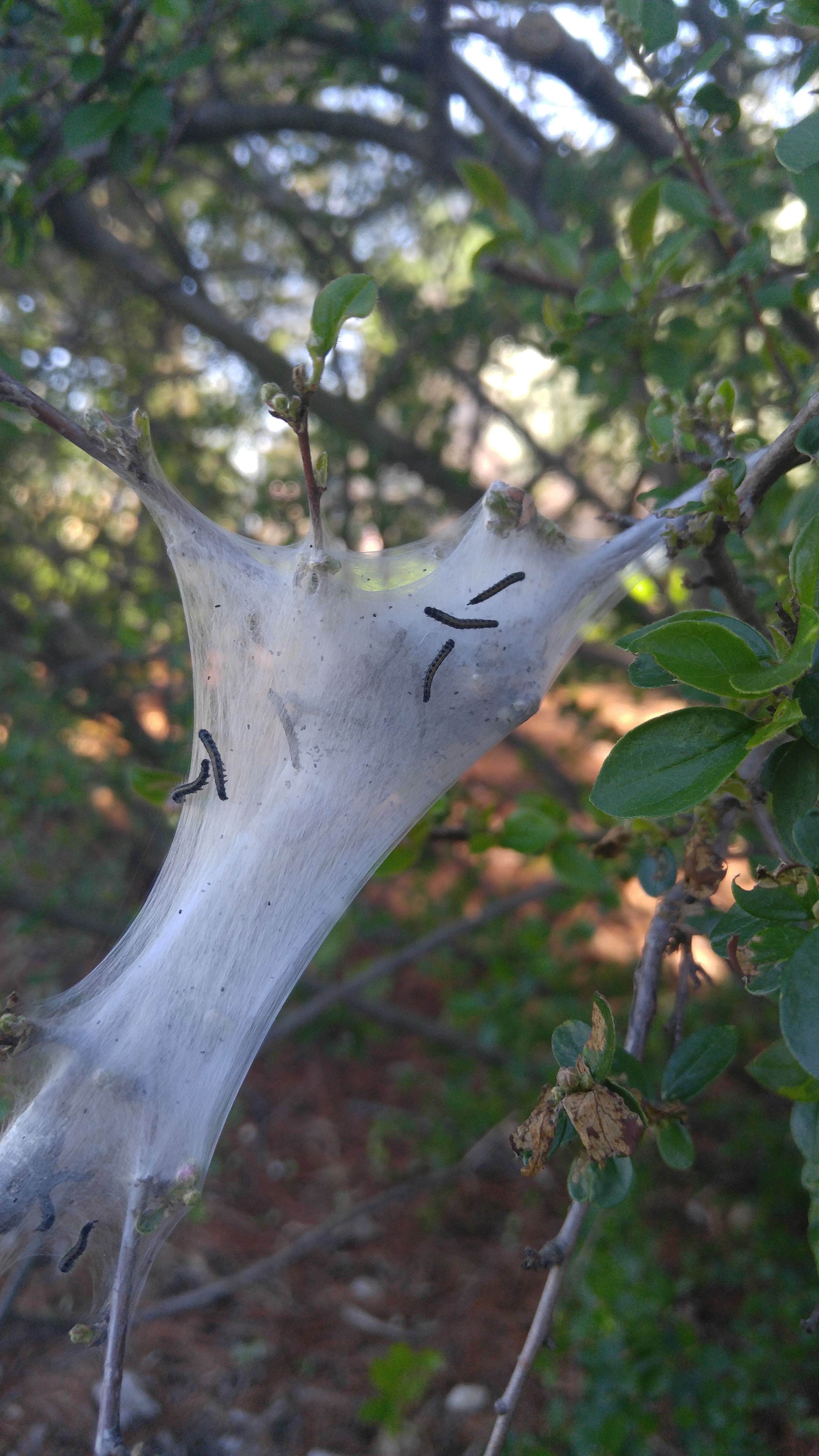
All the species used for commercial silk do not even exist in the wild anymore and are all bread domestically.
Most common silkworms for commercial silk: Mulberry, Tasar, Oak Tasar, Eri, Muga. Different types of silk can be produced depending on the type of silkworm and type of leaf. For example, the Muga silkworm produces gold silk!
(Agritech)
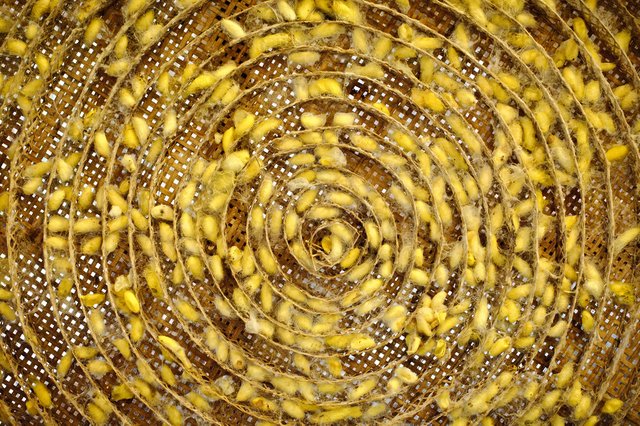
Image 1
Silkworms produce silk during their larvae stage, where they feed on leaves and spin their "webs" into cocoons to transition into the pupal and adulthood stages, where the become a full grown moth. Here's a cute little clip of a silkworm spinning its cocoon. :) (Biology discussion) Hopefully they just stay at the full grown moth stage and don't become moth-man, am I right?
The silk produced by silkworms has many uses, not only for clothing and home decor, but also for bio materials.
Silk can be used to help rebuild muscle, monitor pH levels, and even provide biodegradable and safe fabric for use in surgery. (Biocontrolbeat)
The cocoon stage is the time in which the silk is harvested. The silk farmers throw the cocoons into boiling water to kill the silkworms in order to avoid them fully developing and releasing chemicals that slightly degrades the threads that will become silk.
A new movement, "Peace Silk" aims to address the ethical concerns of harvesting silk. Peace Silk is made from silkworms that are allowed to develop into full moths and are not discarded of. (Earth Divas)
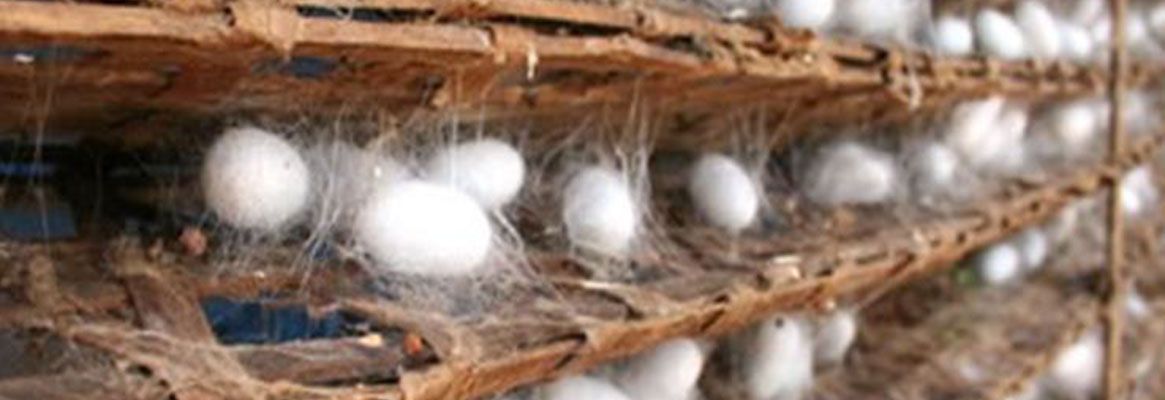
Image 2
Perhaps it's not completely unethical to kill the undeveloped silk moths.... Silkworms are proving to be one healthy snack.
Silkworms are extremely high in protein, making it a great fat metabolite and muscle builder, lowering cholesterol, reversing diabetes, and maybe even Alzheimer's. (Biocontrolbeat)
This snack is arguably great for the environment, creating little to no waste and eating a natural food source. (The Guardian)
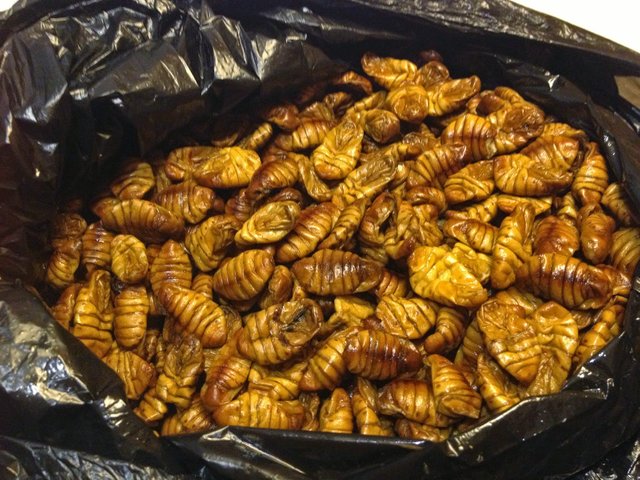
Image 3
Follow-up: I returned to my friends a little later post-research.
It was much later in the day and significantly warmer! I found that they were all hiding. I read somewhere that Silkworms are highly sensitive to changes in temperature or environment and stop feeding if their environment is disturbed. I wonder if hiding was a response to the heat, or maybe they only feed/spin at certain times during the day.
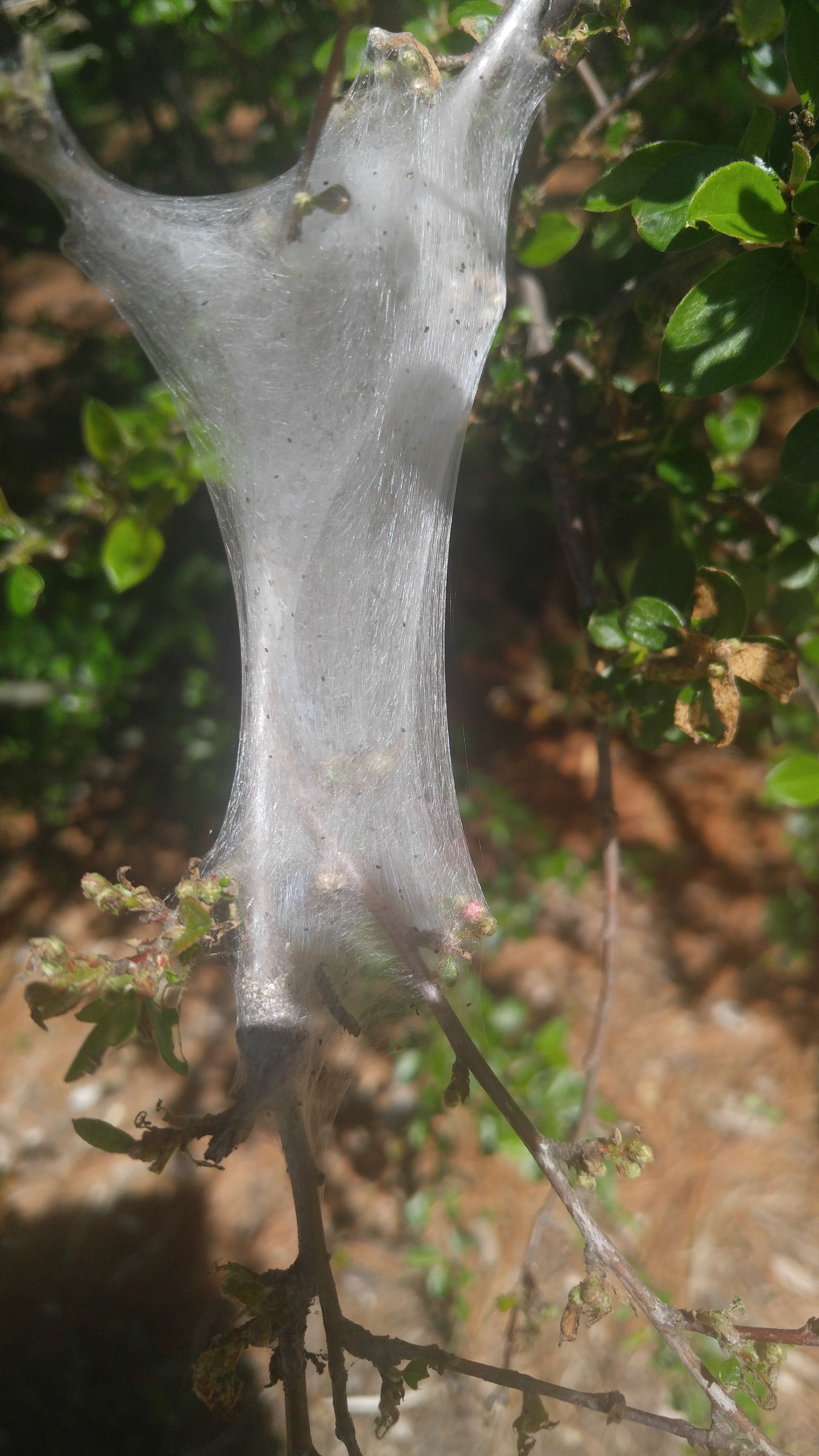
I plan on monitoring these little guys and gals through these next few weeks. Maybe I'll get lucky and see the grown moths. Stay tuned!
Please comment any thoughts, suggestions, or information you may have regarding my post. And maybe you could even follow me for more random stories of discovery. :)
References
(Trouvelot)
(Agritech)
(Biology discussion)
(Biocontrolbeat)
(Earth Divas)
(The Guardian)
And, just because I have an obsessive personality and find silkworm videos adorable, here's some good ones you should watch.